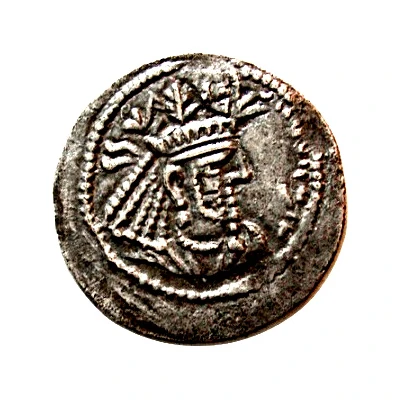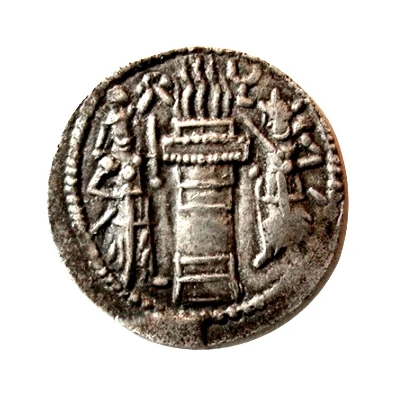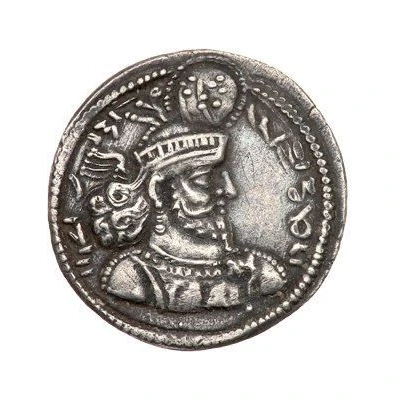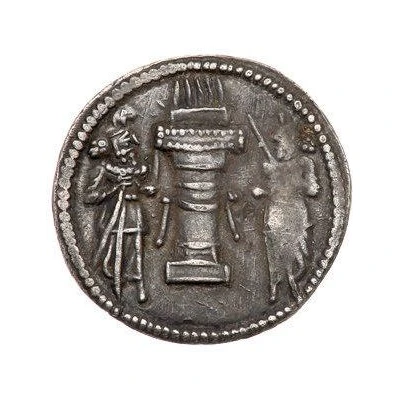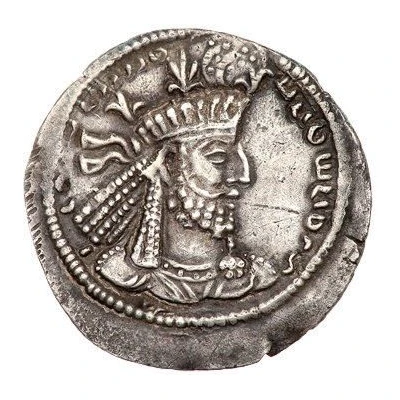
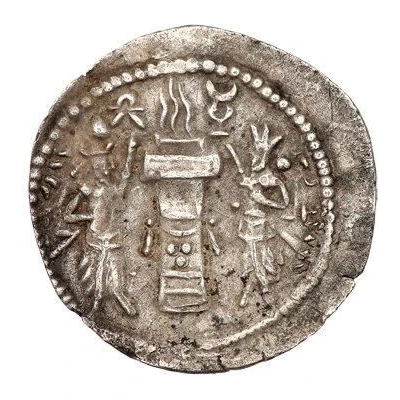

© The New York Sale
Obol - Narseh
| Silver | 0.46 g | - |
| Issuer | Sasanian Empire (Sasanian Empire (224-651)) |
|---|---|
| Emperor | Narseh (293-302) |
| Type | Standard circulation coin |
| Years | 293-303 |
| Value | Obol (1⁄72) |
| Currency | Dinar (224 AD-651 AD) |
| Composition | Silver |
| Weight | 0.46 g |
| Shape | Round (irregular) |
| Technique | Hammered |
| Demonetized | Yes |
| Updated | 2024-10-10 |
| Numista | N#417103 |
|---|---|
| Rarity index | 100% |
Reverse
Fire altar with ribbon, flanked by two attendants, both wearing mural crowns, the left with korymbos, symbols flanking flames, trefoil of pellets on altar shaft.
Script: Inscriptional Pahlavi
Interesting fact
One interesting fact about the Obol - Narseh (293-303) coin from the Sasanian Empire is that it features a unique blend of Persian and Roman influences in its design. The coin's obverse (front) side features a portrait of King Narseh, while the reverse (back) side depicts a stylized representation of the Persian goddess Anahita, who was associated with fertility, water, and prosperity. This blending of cultural influences reflects the complex history of the Sasanian Empire, which was situated at the crossroads of the ancient world and was shaped by various cultural and religious traditions.
